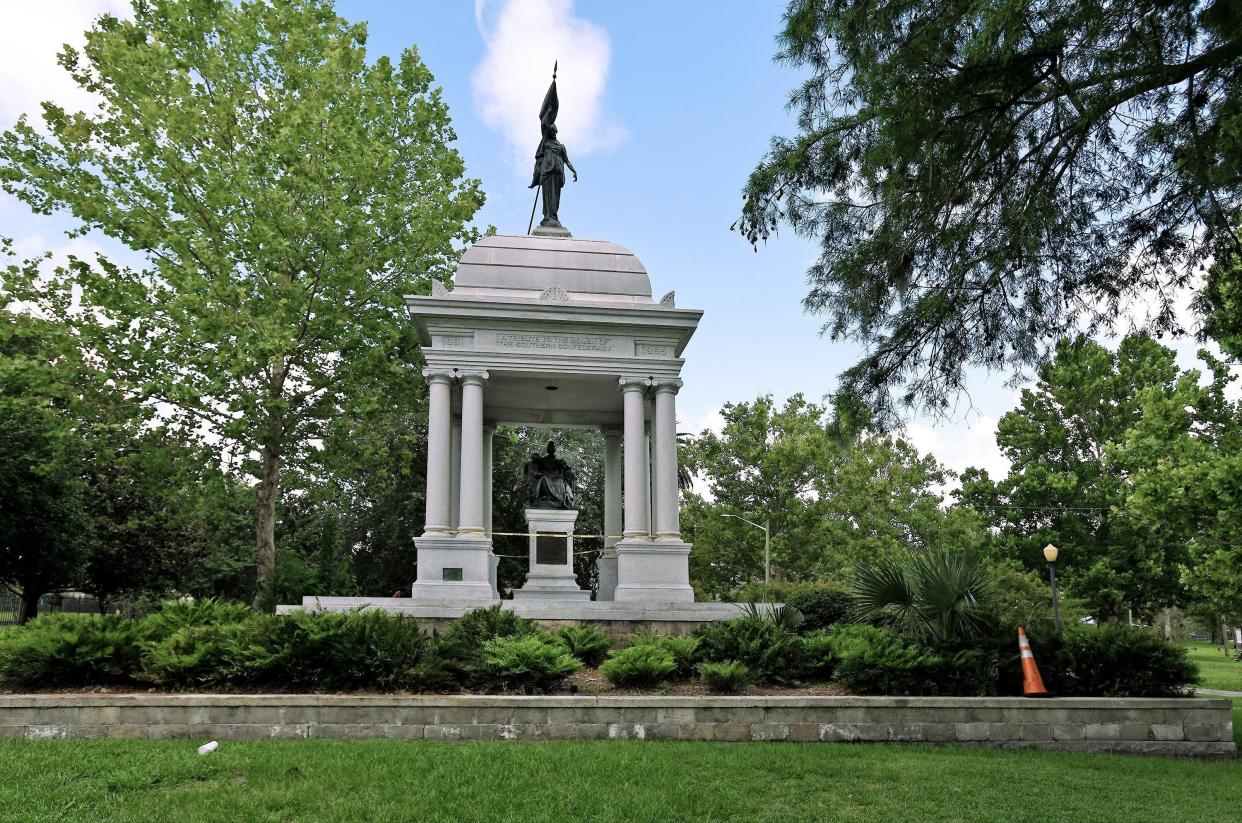Jacksonville reader: No supposition on Confederate monuments and links to slavery

In his Dec. 10 letter, Daniel Mead states that people want the Confederate monument in Springfield Park “torn down due to its supposed association with slavery and treason.” The word “supposed” is an adjective defined as “generally assumed to be the case, but not necessarily so.”
Treason is a discussion, but slavery is intrinsically linked to the Confederacy and all the attending monuments erected in its memory. This is borne out repeatedly in the Confederate Constitution, a document Florida adopted when it seceded from the United States shortly before the beginning of the Civil War.
Article IV, Section 2(1) prohibited states from interfering with slavery:
“The citizens of each State shall be entitled to all the privileges and immunities of citizens in the several States; and shall have the right of transit and sojourn in any State of this Confederacy, with their slaves and other property; and the right of property in said slaves shall not be thereby impaired.”
Article IV, Section 3(3) offered protection to all future territories acquired or conquered by the Confederacy, stating in part that slavery would be “recognized and protected by the Congress.”
Article 1 Section 9(4) forbade any laws denying the right of property in slaves:
“No bill of attainder, ex post facto law, or law denying or impairing the property in negro slaves shall be passed.”
Florida’s secession statement did not mention slavery but at its convention — attended by 69 attendees representing all 36 counties in the state — there came a reckoning. Every delegate was a white male, more than half of whom owned an average of 10 enslaved people. John C. McGehee, president of the Florida Secession Convention, declared slavery “the element of all value” in the South and that ending it would destroy “all that is property.”
In the end, Florida voted to secede 62-7.
The Civil War ended in 1865, not because the South saw the error of its ways, but rather it had exhausted the resources needed to continue fighting. The Confederacy also saw significant desertions among the ranks of its military forces, so much so that it sought to draft enslaved people to its cause.
Reconstruction began in 1866 and ended in 1877, not because the work was done. Republicans sought to maintain their power in Washington, D.C., and the South wanted to regain power in their home states. The opportunity for both to achieve their goal came in the national election in 1876.
When the votes were counted, three states were undecided: Florida, Louisiana and South Carolina. In Florida, the state Supreme Court ruled that the Republican Rutherford B. Hayes won. Hayes was awarded Louisiana and South Carolina in a deal that resulted in the departure of Federal troops from the South.
To some, the South was free again. To others, life would become the epitome of terror.
Mr. Mead stated that the Springfield monument “was meant to honor the sacrifices of the wives, mothers and daughters of the men who were away fighting.” The Battle of Olustee comes to my mind, just as it did with Mr. Mead.
The battle has been reenacted for many years and the massacre of Black Union troops at Olustee is well-documented. Brig. Gen. P.G.T. Beauregard, who commanded the Confederate defenses of Florida, Georgia and South Carolina, rightly figured he could overpower his Union opponents. As Union forces retreated, the Southern troops, under the field command of Brig. Gen. Joseph Finegan, chose to kill captured and wounded troops in the field.
Letters: Duval residents want fair financing for charter schools, not favoritism
Many of those were Black Union soldiers, members of the 54th Massachusetts Infantry and other regiments of the U.S. Colored Troops. The bodies were interred in shallow graves, which were later disinterred by hogs.
Other similar incidents took place at Fort Pillow in Tennessee; Simpsonville, Ky.; and in Plymouth, N.C., in this case at the hands of Confederate Gen. Robert Ransom, known for taking “no negro prisoners.”
Nate Monroe: Clock is ticking to remove Confederate monument in Jacksonville park
I’m not replacing anything here with my “own approved ‘truth’,” as Meade put it. I’m providing facts derived from primary sources such as the Confederate Constitution, firsthand reporting on the Florida Secession Convention and contemporaneous reporting in the field of battle by the opposing combatants.
Yet this time next year, the Springfield edifice will most probably still exist, as a testimonial to God knows what.

Chris Hildreth taught American history and geography at Ribault Middle School for three years, while his primary career was in production management. He lives in Jacksonville.
This guest column is the opinion of the author and does not necessarily represent the views of the Times-Union. We welcome a diversity of opinions.
This article originally appeared on Florida Times-Union: Facts are clear on meaning of Confederate monuments in Jacksonville

